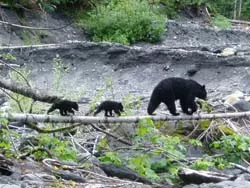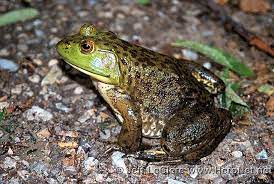Unit 2 Overview
- Define ecosystems
- List ecosystem components
- Biosphere
- Ecosystems
- Communities
- Populations
- Organisms
- Explain the trophic levels
- Define species and biodiversity
- Species diversity, the number and abundance of the different kinds of species living
- Genetic diversity, which is the variety of genes found in a population or in a species
- Ecosystem diversity, the earth's diversity of biological communities.
- Functional diversity, the variety of processes such as energy flow and matter cycling that occur within ecosystems as species interact with one another in food chains and food webs
- State the difference between food chains and food webs
- State the difference between major native, non-native, indicator and keystone species in your area
- Describe Evolution
It is the interaction between organisms and the biotic (living) and abiotic (non-living) enviornment. Ecosystem is multiple communities working together
Ecosystem have 5 components
Trophic level which is the feeding level. Producers are organisms such as green plants that make the nutrients they need
from compounds and energy obtained from their enviornment.
Secondary consumers that feed on the flesh of herbivores.
Tertiary consumers that feed on the flesh of herbivores and other carnivores.
Omnivores Eat both plants and animals.
Decomposers are consumers that get their nutrients by breaking down the waste of plants and animals.
Detritus feeders/detritivores get their nutrients by feeding on the waste of dead bodies (detritus) of other organisms.
Biodiversity: is the variety of life on earth. It has 4 components
Food chain: A sequence of organisms with each serving as a source of nutrients of energy for the next level of organism.
Food web: In natural ecosystems most consumers feed on more than one type of organism and most organisms are eaten or decomposed by more than
one type of consumer.
Salmon: A keystone species

Native
Black Bear
As omnivores, bears eat a little bit of everything, which helps the forest stay healthy and clean. As bears graze
for nuts and seeds throughout the late summer and fall, the undigested seeds are deposited in their droppings, or scat,
which then fertilizes them to grow into the giants that visitors come from around the world to see. Even as these giant trees fall,
bears are there to dig through the logs in search of insects inside, helping to make a new forest floor. These new berry bushes and
leafy greens attract elk and deer, as well. As these animals die off, the bears will help to eat the carcasses, providing more nutrients
to the soil and building the web of Olympic life!
These creatures have an incredibly varied diet. They often feed on tree sapwood, young tree bark, and insect mounds until berries come in season.
Bears can be spotted frequently in the early fall raiding the huckleberry bushes on mountain slopes. During various salmon runs in both spring and fall,
bears will feed in shallow waters where they have a relatively easy time catching salmon en route to spawn, or salmon carcasses that have done so already.

Non-native
Bullfrog
The original native range of bullfrogs was the eastern United States, but they have been introduced to most of western North America. Bullfrogs were first introduced
into Washington during the Great Depression in the early 1930s to provide a food source of frog legs for interested hunters.
Adult bullfrogs usually are "sit and wait" predators that readily attack almost any live animal smaller than themselves, including insects, frogs, tadpoles, fish,
small snakes, turtle hatchlings, newts, salamanders, bats, hummingbirds, and ducklings. Bullfrogs use their sticky tongues to subdue prey, but that's not their only
method of securing food. Large frogs are more likely to lunge at their targets. Once they get a grip with their wide, sturdy jaws, they use their front feet to shove
the items down their gullets.
Invasive species

Keystone
The enormous benefit that salmon provide for countless species and the overall health and Function
of the coast is what makes a salmon a keystone species.
Salmon feed our coast
They feed land mammals, birds, marine mammals and our forests.
Salmon: A Keystone Species
Pacific salmon are mostly anadromous, meaning they are born in freshwater, migrate to the ocean,
and then migrate back to freshwater, spawn and die immediately after. On their journey to the ocean,
more than 50 per cent of their diet is insects which fall into streams from surrounding tree canopies
(Allan et al. 2003, Baxter et al. 2005).
Without Pacific salmon, there would be the potential for an explosion of insects,
as salmon are the main insect predator in aquatic environments. When salmon return to their native streams to spawn,
their energy-rich carcasses and eggs are consumed by a variety of predators in coastal watersheds, including wolves, bears, and scavenging birds.
Biological evolution The process by which species change genetically over time.
